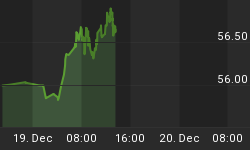With investor optimism toward the stock market returning, I felt it appropriate to write a follow-up to my most recent article, "Semiconductors Confirming Economic Strength," by highlighting another high-octane sector of the market.
Biotechnology stocks capture investors' hopes and fears like no other group, save Internet stocks. As people search for the company that will provide the cure for cancer, AID, etc. and it's no shock that the cycle of promise and disappointment in this sector can result in a $1.13 stock that runs up to $3.50 Tuesday and settles back to $1.20 by Friday. Indeed, the biotech sector as a whole thus far in 2005 has shown a first quarter performance of negative 9.9% while the second quarter rebounded to show a 12.5% gain. Love 'em and hate 'em all in the same year: that's the biotech group.
Because this sector can be so volatile, I believe it is possible to be a little bit late to the party and still catch significant percentage moves in individual biotech issues. Thus, I tend to hold biotech stocks in our portfolios only when they clearly show signs of sponsorship and particularly when they're exhibiting such strength from oversold levels. And since this volatile sector can provide buying opportunities and significant profit taking opportunities in short order, it is wisest for most investors to steer toward the large, liquid biotech names such as Gilead, Amgen and Genentech while avoiding the flash-in-the-pan types like Entremed and Ariad, despite their momentary allure.
Further, my investment management style is firmly based on the premise that when investing, market conditions are most important in determining when to act, followed by the sector's condition and only lastly by individual stock selection. This classic "top-down" approach to technical analysis is crucial since studies have shown that market and sector conditions typically account for more than 75% of a stock's movement, with only a fraction of share price movement actually coming from the company's fundamentals itself. Because I so highly value market and sector conditions when analyzing what to buy, perhaps a look at whether the Biotech sector currently makes sense is in order.
While the market is currently on the offensive, from a supply and demand standpoint it is in relatively poor field position and the rally from the May lows is getting tired. Recently, there have been some early signs that the summer dog days are starting to set in. Because we reach such posture in front of the often-troubling months of September and October, I am expecting any pullback we might see in those months to provide an attractive entry point.
Because the Biotech sector relative strength is strong and getting stronger, it will be one of the groups I'll have my eye on in coming weeks. As can be seen in the chart below, the sector bullish percentage recently exceeded its previous top at 50 (most recent column of Xs, which mark rising trends in Point and Figure analysis):
DWA Biotech Point & Figure chart:
Chart Copyright © 1995-2005 Dorsey, Wright & Associates, Inc.
This breakout signifies that 52% of biotechs are controlled by demand, or on Point and Figure buy signals. Despite this show of strength, the market's currently overbought condition would cause us to place protective stops under most individual biotechnology holdings at this time, but the sector's recent strength should be kept in mind for buying on pullbacks, especially should the overall market become oversold while this sector showed relative strength/held above its previous lows. Further, this would not be an ideal time to speculate in the smaller biotech names given broad market conditions.
With market indicators at elevated risk levels, know your risk/reward opportunities - this is now a market environment in which to be very careful, particularly with regard to the most volatile sectors.
P.S. While I'm not a pessimist by any stretch, in the effort to bring our clients many different viewpoints we're currently featuring what I consider to be an interesting technical commentary on the market from newsletter editor Elliott Gue, who's more optimistic about very near-term market conditions: http://www.deltaga.com/archives.asp?type=1&id=42. Be sure to give it a look.















